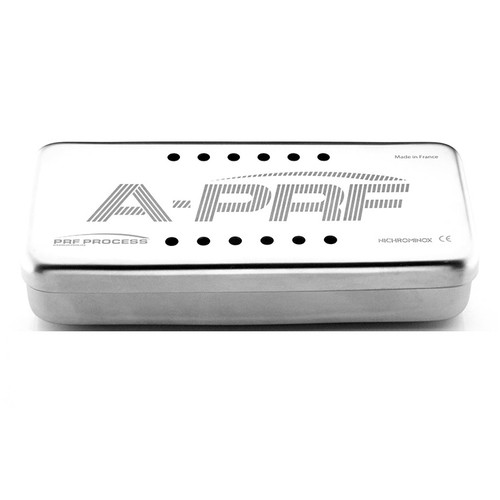- A cylindrical instrument used in dental and surgical procedures to compress Platelet-Rich Fibrin (PRF) clots into dense, cylindrical plugs
- Often used with a press box, which contains clot-forming molds
- This is a complementary tool to the PRF-ROLL
Description:
- The PRF process begins with a blood draw from the patient, which is then processed in a centrifuge to separate the blood components
- The isolated, gel-like PRF clot is placed into the cylindrical molds of a press box
- The Piston is then inserted into the mold to press and condense the clot into a stable, cylindrical plug
Uses:
- Socket Preservation:
- After a tooth extraction, a PRF plug can be placed into the empty socket
- Helps preserve the shape of the alveolar bone and accelerates healing by protecting the vulnerable site from bacteria
- Dental Implant Placement:
- When placed in the site of a dental implant, the PRF plug occupies the space around the implant
- It accelerates osseointegration, the fusion of the implant with the jawbone, leading to a more stable and successful implant
- Bone Grafting:
- In procedures that require bone grafting, PRF plugs can be mixed with the graft material to create a "sticky bone"
- This enhances the stability of the graft and promotes new bone formation
- Filling cavities:
- PRF plugs can be used to fill small cavities or other defects in the bone, aiding in regeneration
Benefits:
- Uniform shape and density:
- The piston creates consistently shaped and dense PRF plugs, ensuring a predictable clinical outcome
- Enhanced healing:
- The concentrated plug acts as a scaffold that provides a sustained release of growth factors and promotes healing
- Reduced complications:
- For tooth extractions, using a PRF plug can drastically reduce the risk of a dry socket, a painful complication that can occur after the clot is dislodged
- Biocompatible:
- Like all PRF products, the piston-formed plugs are created from the patient's own blood, eliminating the risk of allergic reactions or disease transmission
- Cost-effective:
- The use of the patient's own blood as a grafting material is often more cost-effective than using synthetic alternatives







